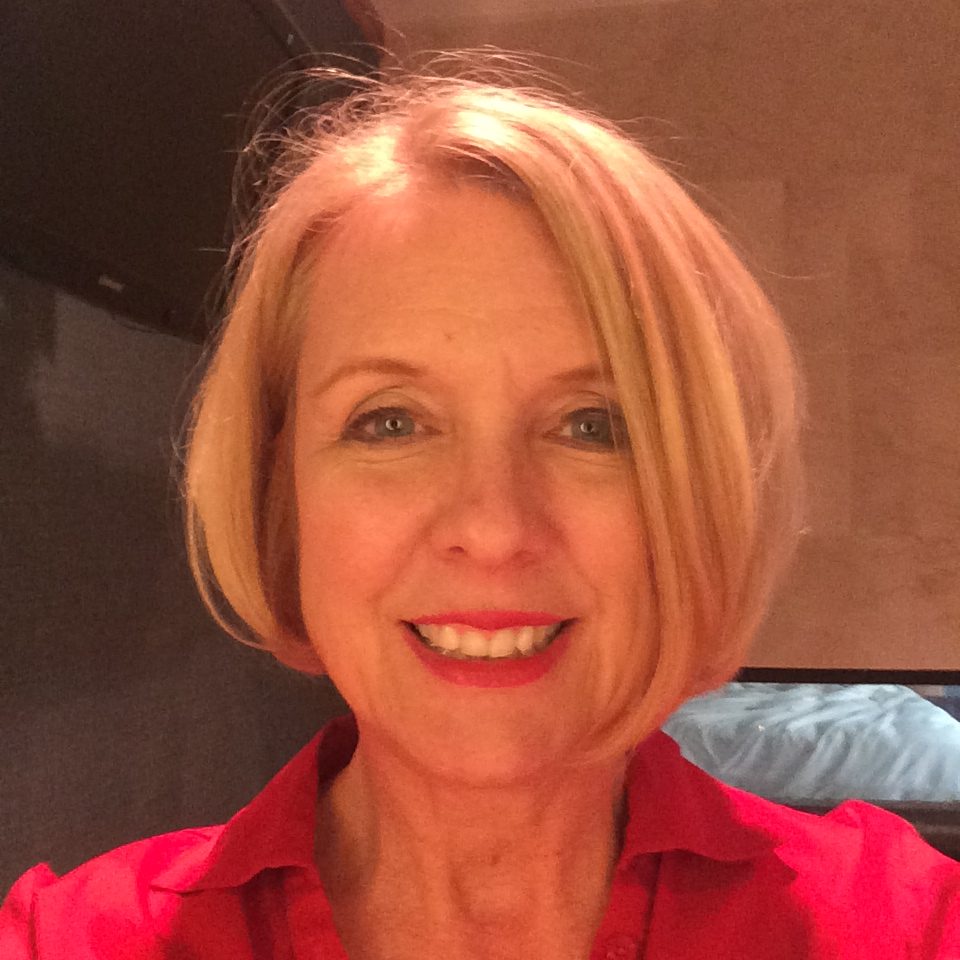In 2007, Larry Howe watched a documentary called The Great Global Warming Swindle, which denied the threat of climate change. Convinced, he put the issue out of his mind.
But that changed a few years later when Howe’s first grandchild was born. A retired engineer, Howe, 64, dug deeper into the science. Now he’s active with the Citizens’ Climate Lobby and talks to local groups, like the Rotary Club and Kiwanis, in Plano, TX, where he lives. He’s often met with skepticism—especially among people in his own age group.
“Most don’t think they’ll be negatively impacted themselves,” he said. “They may agree that climate change is a serious problem but think ‘I won’t be around for it. It’ll get worse, but after I’m gone.’”
If anybody should be concerned about the issue, it would seem to be older people, who stand to suffer more from climate-change-related problems—from weather disasters to air pollution. And many, like Howe, do grow more concerned about the future when grandchildren arrive. Yet many older adults remain unprepared for disasters in their own homes and communities, and studies suggest elders are less concerned about climate change than their younger counterparts.
So why the disconnect?
Climate Disasters and Later Life
Climate change is triggering more frequent and more disastrous weather events, and older adults stand to suffer the most. Nearly half of those who died in 2005 during Hurricane Katrina were 75 or older. In 2012, when Hurricane Sandy hit New York and New Jersey, almost half of those who died were over age 65.
“Older adults are more vulnerable and experience more casualties after a natural disaster, compared to other age groups,” according to a study from the American Red Cross Scientific Advisory Council and the American Academy of Nursing. The study cited the likelihood that older adults will have chronic conditions and rely on medications, and will be dependent on assistive devices (like walkers or eyeglasses) and support from caregivers. Older people are also more likely to live alone, leaving them even more vulnerable. Those with mobility limitations are at greater risk, because it’s more difficult to get out of harm’s way.
From 2015 to 2019, the United States saw at least 10 massive, climate-related disaster events each year, with each incurring a loss of $1 billion or more—the longest streak since record keeping began in 1980. In 2020, as of October 7, the United States was affected by 16 climate-related disasters with losses per event exceeding $1 billion: one drought, 11 severe storms, three hurricanes and one wildfire.
“As we respond to disasters, we see the heartbreak of … communities dealing with the new realities of more intense storms, heavier rainfall, higher temperatures, stronger hurricanes and historic wildfires,” the Red Cross said in a 2019 statement on climate change.
At the same time, older people are less likely than others to be prepared in the event of a major disaster. One 2014 survey found that two-thirds of adults 50 or older had no emergency plan, had never participated in any disaster preparedness educational program and were not aware of the availability of relevant resources. More than a third of respondents lacked a basic supply of food, water or medical supplies in case of emergency.
Chronic Problems Made Worse
Older people often suffer from chronic health problems that can be exacerbated by climate change. Global warming leads to longer allergy seasons and more air pollution, affecting people with allergies, asthma and other lung conditions. As heat waves grow more and more extreme, older people stand to suffer more, and need to stay in more, especially those who retired to sunbelt states like Arizona. Some scientists speculate that climate change might also mean more risk from new infectious diseases—such as COVID-19—and might make people who live with polluted air more vulnerable to them.
Climate change also affects the costs of living. Energy expenditures to keep a home air conditioned go up as the temperatures rise. Home insurance rates skyrocket in areas subject to disasters like wildfires, flooding and hurricanes; in some cases, homeowners can’t even get insurance.
“So, you have increasing costs at a time when your income is fixed,” said Howe. “Age is like a threat multiplier when it comes to climate change.”
Attitudes toward Climate Change
But while there’s a consensus among scientific, disaster-response and medical experts that climate change disproportionately threatens the health and safety of older adults, that’s not reflected in the attitudes of this age group. Older people seem even less aware than their younger counterparts of the threats they face.
Michael “Mick” Smyer has researched older adults’ attitudes toward climate change. He is a gerontologist, professor emeritus of psychology at Bucknell University and the founder and CEO of Growing Greener: Climate Action for a Warming World, an organization that promotes education related to climate change.
While concern and awareness are increasing among people of all ages, there are some age differences. Smyer points to research and analysis from the Yale Program on Climate Change Communication. When asked, “How worried are you about global warming?,” 72 percent of younger people (ages 18-39) reported they were “somewhat” or “very” worried. By contrast, only 61 percent of baby boomers (ages 56-74) and 56 percent of those 75 or older reported the same levels of concern.
The lack of awareness and disaster preparation among older adults might relate to human nature—our capacity to dismiss danger when it’s not imminent. When asked, “How much do you think global warming will harm you personally?,” the age differences narrowed, with 44 percent of younger people responding “a moderate amount” or “a great deal,” compared to 41 percent of boomers and 39 percent of the oldest respondents.
“That’s not a big difference,” Smyer said. “Can we find older adults who are members of the climate change denial club? Absolutely. Look at the ranking, senior, US senators. But can you generalize to all older adults? No.”
Natural disasters make the news, but climate change itself gets less than one percent of airtime.
However, Smyer thinks there may be age differences in the way that older people prepare for disasters. Smyer, 70, was born and raised in New Orleans; Hurricane Katrina was the impetus that spurred his interest in climate change. He thinks more older adults died in Katrina, in part, because they’d lived through many hurricanes before and chose not to evacuate. Most were able to weather the hurricane itself—but not the flooding and prolonged disaster that followed when the levees broke.
“Older adults thought they knew how to survive hurricanes,” he said. “And in a sense, they did. They were the ones who had axes in their attics, to chop their way through the roof to survive a flood. But many thought, ‘I’ve learned from previous, similar disasters and I can generalize to this situation.’ Except the conditions changed, and that’s what people don’t appreciate.”
Smyer attributes the disconnect between awareness and action to what he calls society’s “climate silence habit.” Natural disasters make the news, but the bigger and longer-term cause—climate change—tends to fall to the background.
The 24-hour news cycle saturates viewers with news of weather events, but climate change gets very little airtime. Media Matters, a US media watchdog, calculated that only 0.3 percent (55 of 16,000 total minutes) of evening news airtime on the major TV networks (ABC, CBS and NBC) was dedicated to climate change in 2018. (That’s compared to 28 percent of news minutes dedicated to President Trump.)
Some efforts for change are underway. Until recently, TV meteorologists traditionally avoided discussing climate change on the air, wishing to avoid appearing too political. Now many are bringing up the issue regularly, and even talking about possible ways to tackle it, according to a panel of meteorologists and policy experts convened at the 2020 meeting of the American Meteorological Society.
“Broadcasters have an unusually good platform from which to engage,” said Ed Maibac, the director of the Center for Climate Change Communication at George Mason University. He noted that weather casters telling local stories about climate change have increased more than 50-fold over the last eight years.
Making the Message Stick
Rick Lent, 72, didn’t think much about climate change until a conversation with his college-age granddaughter two years ago.
“Please tell me there’s something to be hopeful about in the future environment I’m living into,” she said. “Because I’m really scared.”
That spurred Lent to activism through the Boston chapter of Elder Climate Action. He shares the conversation he had with his granddaughter when he speaks to groups of older adults at senior centers and community centers. Often, he has to hold back tears.
“I have to watch my emotions when I tell that story,” he said. “That really personalizes it.”
Smyer thinks that’s key. “The best way to reach older adults is through family members,” he said. He created a deck of climate-change cards to encourage young people—from elementary–aged kids to college students—to start the conversation.
Their attitude [to climate change] is, “I’m not going to be around to fight that battle, so what can I do?”
— Rick Lent
“What’s really clear to me is that older adults are not just potential victims but also potential leaders of climate action,” Smyer said.
Lent says he sees two kinds of responses among older adults when he talks about climate change.
“Well educated, middle- or upper-middle-class people don’t seem to be paying much attention,” he said. “I can’t say why except that they did what they were supposed to do —raised families, put money in their 401K—and now they’re retired and enjoying life. Their attitude is, ‘I’m not going to be around to fight that battle, so what can I do?’”
He says it’s even more difficult to engage low-income people of color.
“Those are the people most impacted by climate change and who have the fewest resources to deal with it,” he said. “If you can’t afford to put in air conditioning in your home, you’re not thinking about working to improve local air quality.”
Where Lent lives in Massachusetts, the biggest threat from climate change is the increasing number of severe heat waves, which affect older people most directly.
“It’s a problem, but then people forget and move on,” he said.
Separating Science and Politics
Politics is a big part of what informs attitudes toward climate change, Smyer said, and older adults are more likely to lean conservative; that may serve to reinforce their skepticism. Research shows that those who identify as left-leaning tend to express more concern about climate change and want more action to reduce its effects. Conservative older adults also tend to express significantly less concern than their Generation Z or millennial Republican counterparts, according to a Pew Research Center survey.
Howe, who is a conservative Republican, hopes science, not politics, can inform older adults’ views on the issue. He worries climate change has become politicized in a way that tends to make people of all ages resistant to scientific facts, noting the growing distrust in science he sees in response to the COVID-19 pandemic. But he’s also hopeful that education can help change some minds.
“When I talk to groups, I try to address skeptics in the audience,” he said. “I try to get people to think that this isn’t just a political, polarizing issue. I share my personal journey. I thought fixing climate change meant killing the economy. It doesn’t have to. There are a lot of ways to solve it.”

Freelance writer Mary Jacobs lives in Plano, TX, and covers health and fitness, spirituality, and issues relating to older adults. She writes for the Dallas Morning News, the Senior Voice, Religion News Service and other publications; her work has been honored by the Religion Communicators Council, the Associated Church Press and the American Association of Orthopaedic Surgeons. Visit www.MaryJacobs.com for more.



